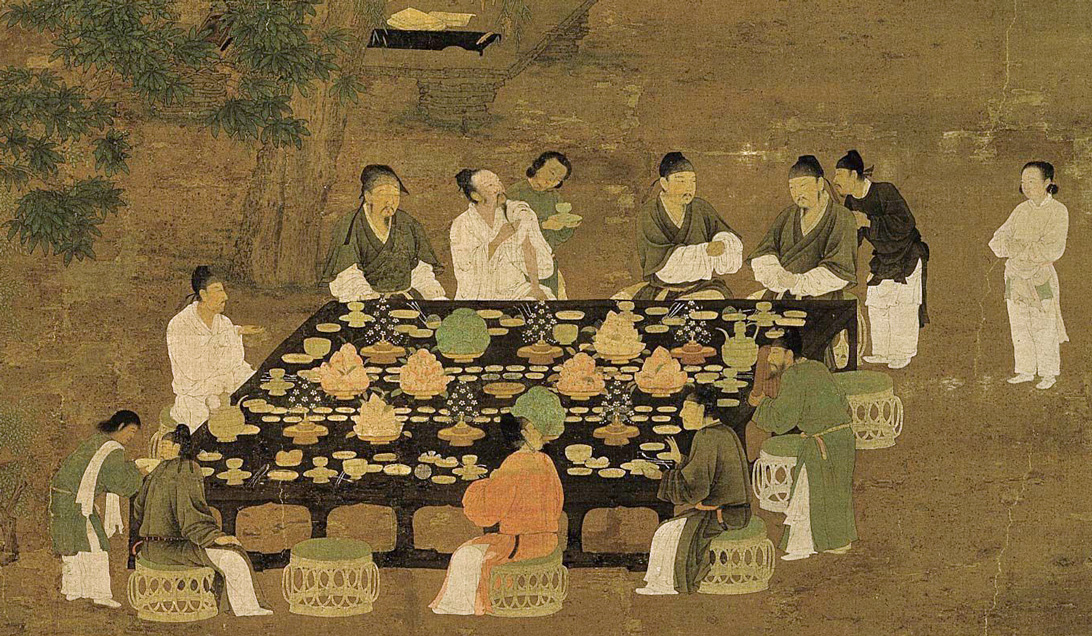China earliest country to discover tea

This painting, by Emperor Hui Zong of the Song Dynasty, depicts him attending a tea party with his ministers.
It is claimed in the first monograph on tea The Classic of Tea, written by Lu Yu (733-804) in the Tang Dynasty, that Shennong was the first person to make tea as a beverage.
Shennong, known as the Emperor of the Five Grains, is a mythical ruler of prehistoric China. He is often said to have taught ancient Chinese agricultural techniques and the use of herbal drugs.
In reality, opinions on the origins of tea vary and many folk tales have emerged.
Despite this, the most widely known tale still comes from Shennong.
It is said that one day, he boiled water in a large pot in the wild. A few leaves fell into the pot. The water turned light yellow and tasted refreshing and quenched his thirst. Shennong, based on his experiences tasting a hundred herbs, judged this to be a herbal drink.
China, known as the homeland of tea, is the earliest country in the world to discover and make use of tea plants. Written records indicate that Chinese began to grow tea plants 3,000 years ago. There are many disputes about the origin of tea plants. But with the development of verifying techniques and new discoveries, historians have agreed that the region of Southwest China, including Yunnan, Guizhou and Sichuan provinces, was the origin of tea plants. The Chinese tea industry originally started in Sichuan and later spread to East and South China. On account of geological changes and man-made cultivation, tea plants were rapidly popularized throughout the country and began to spread to every corner of the world.
In the Tang Dynasty, tea was transmitted to Japan and Korea, and it was introduced to the West in the 16th century. So there are two routes—domestic and international ones—for the spread of tea.
China’s greatest contribution to the world tea industry was discovering and making use of tea bushes, and developing a unique tea culture for China, the East and even the whole world.
The tea producing areas in the Song Dynasty largely correspond to modern tea areas in China. In the Ming and Qing dynasties, tea production in the Chinese mainland was significantly developed, but the tea making methods and the popularity of various types of tea endured great changes.
Chinese tea and its customs were brought to the international stage through cultural exchanges and commercial trade. Chinese tea culture exerted a great influence on Japan and Korea. In addition, Chinese tea was carried by merchants and envoys to Indonesia, India and Sri Lanka through the marine route in South China. In the 16th century, it was introduced to European countries and American continents. Chinese tea then spread to Persia and Russia through North China at that time.
It is recorded that in 805, Japanese monk Saicho brought Chinese tea seeds back to Japan and planted them in Higashiomi, which is the earliest written document about Chinese tea spreading to foreign countries. Now, the country with the largest production and exports of black tea is India, but its tea seeds come from China as well. Although there were wild tea plants in India, Indians didn’t know how to grow tea plants and drink tea until 1780. British and Dutch colonists brought Chinese tea seeds and grew them in India.
Tea in Spanish is called te, and Dutch and Germans spell as thee. The English word “tea” has similar pronunciation with other European languages. It is generally acknowledged that the origin of the word “tea” comes from Fujian dialects. Quanzhou, Zhangzhou and Xiamen in Fujian Province have been three significant markets for Chinese tea’s imports and exports since the Tang Dynasty. Western merchants heard local people called tea “tey,” which gradually evolved into the spelling of tea in English.

 PRINT
PRINT CLOSE
CLOSE